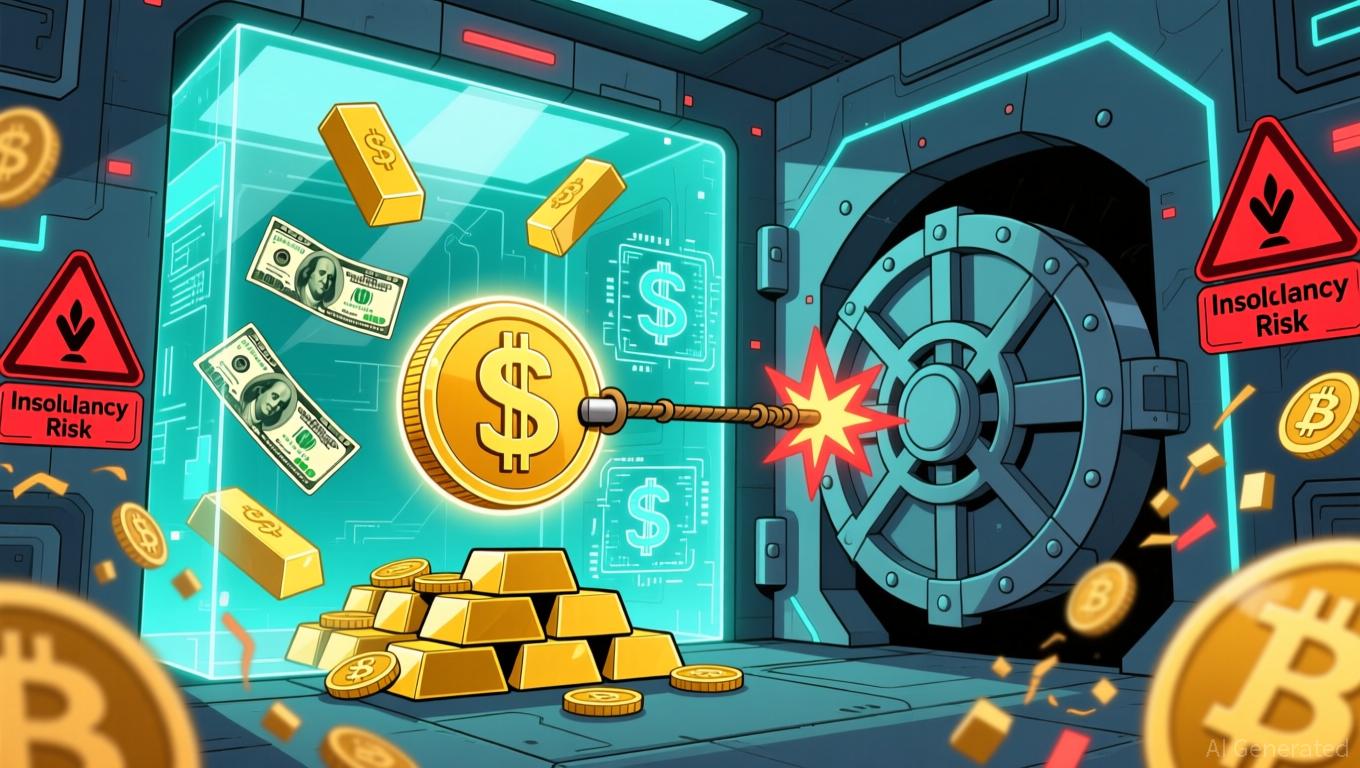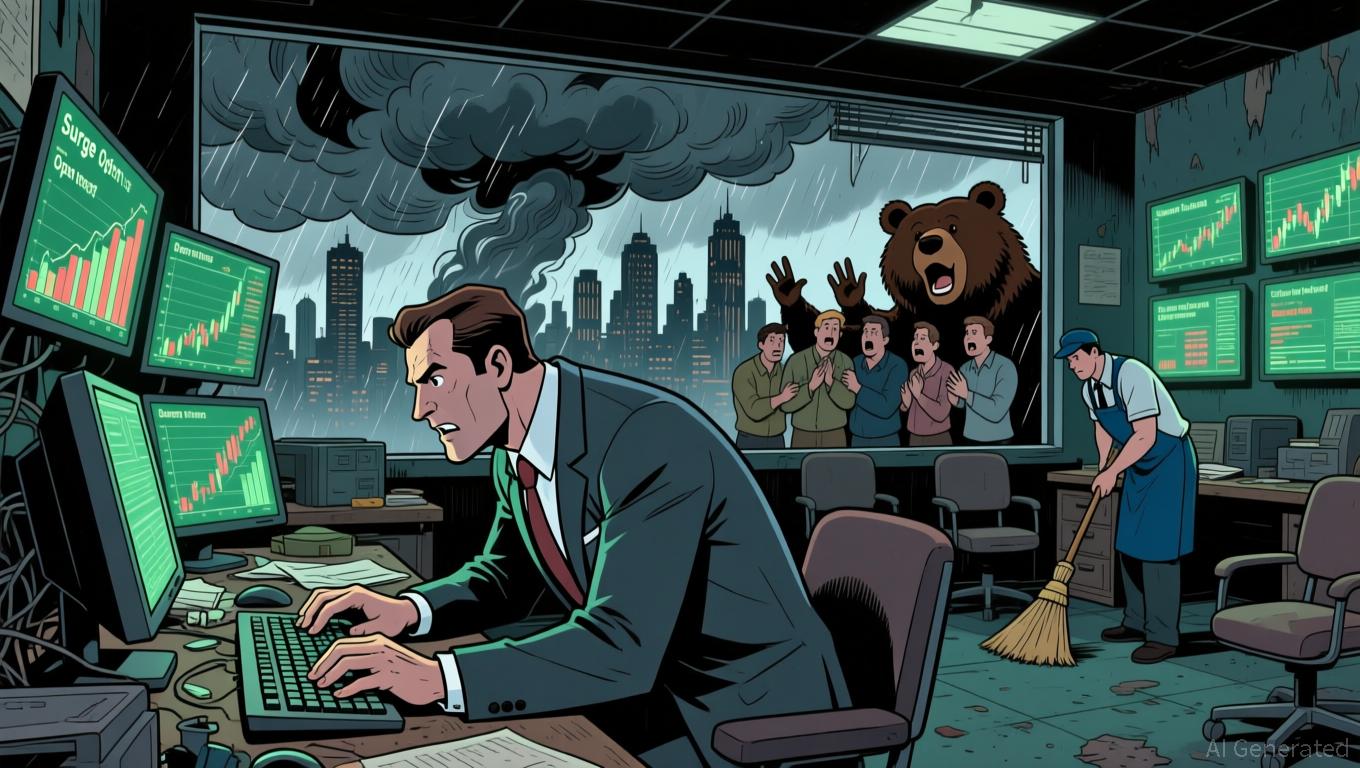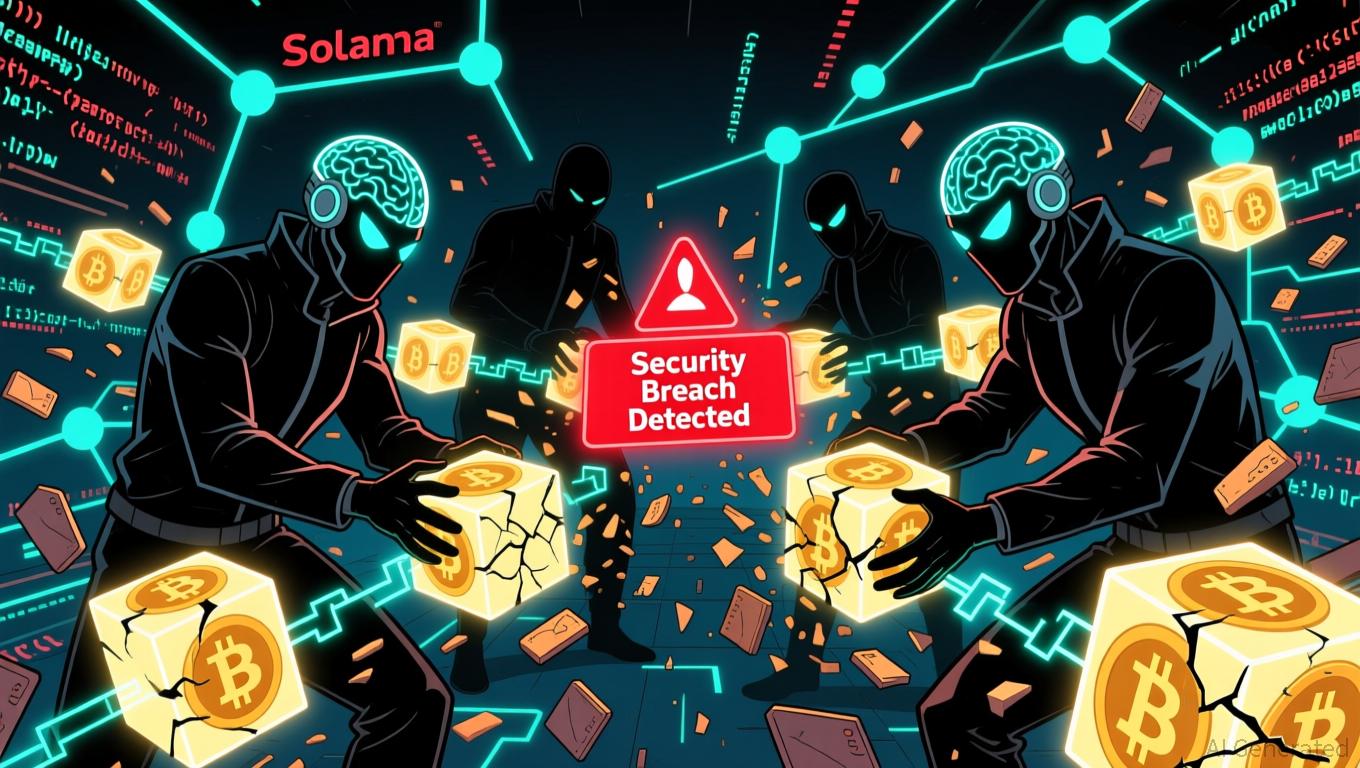Bitcoin News Update: S&P Rating Drop Highlights Tether’s Risky Asset Holdings and Lack of Transparency
- S&P downgrades Tether's USDT to "5 (weak)" due to high-risk reserves and transparency gaps. - Tether's 5.6% BTC exposure exceeds overcollateralization margins, risking undercollateralization if prices drop. - CEO dismisses critique as traditional finance bias, claiming no "toxic" assets in reserves. - Regulators intensify scrutiny as stablecoin centralization risks emerge amid $184B USDT circulation. - S&P urges Tether to reduce risky assets and enhance reserve disclosure to rebuild trust.
S&P Global Lowers Tether’s USDT Rating to Weakest Level
S&P Global Ratings has assigned Tether’s USDT stablecoin its lowest possible rating—“5 (weak)”—on the agency’s 1–5 risk scale for stablecoins. This decision was driven by concerns over Tether’s growing allocation to riskier assets and ongoing issues with transparency. The downgrade highlights increasing regulatory attention on stablecoins, which are intended to maintain a consistent value by being pegged to fiat currencies such as the U.S. dollar.
As the issuer of USDT, Tether now faces mounting scrutiny regarding the makeup of its reserves and its disclosure practices, especially as regulatory expectations continue to evolve.
Concerns Over Reserve Composition
S&P’s downgrade reflects its view that Tether’s reserves now include a larger share of volatile assets like Bitcoin (BTC), gold, corporate bonds, and secured loans. These assets introduce additional credit, market, and liquidity risks. S&P specifically noted that Bitcoin now represents 5.6% of USDT’s backing, which surpasses the 3.9% overcollateralization margin. This means that if Bitcoin’s price were to fall further, Tether’s reserves might not be sufficient to fully cover USDT in circulation, raising the risk of undercollateralization.
Additionally, S&P criticized Tether for providing limited information about its custodians, counterparties, and how its reserves are managed. The agency also pointed out that Tether’s reserves are not separated in a way that would protect users if the company became insolvent.

Tether’s Response to the Downgrade
Paolo Ardoino, Tether’s CEO, responded strongly to S&P’s decision, dismissing the downgrade as evidence of traditional finance’s resistance to disruptive companies. In a statement on X, Ardoino argued that Tether is “the first overcapitalized firm in the financial industry” and insisted that its reserves do not contain any “toxic” assets. He also criticized S&P for using outdated assessment methods designed for banks rather than digital asset companies, emphasizing that Tether operates outside of conventional financial systems.
Ongoing Debate Over Transparency and Risk
This dispute has brought to light the ongoing friction between stablecoin issuers and regulators regarding transparency and risk management. Tether claims that its $184 billion in USDT is fully backed by reserves, including 116 tons of physical gold. However, S&P pointed out that the details of these assets remain unclear. Even with significant holdings in short-term U.S. Treasuries, the lack of detailed information about counterparties and reserve management undermines confidence in USDT’s stability. These concerns have fueled broader questions about the risks of centralization in stablecoins, which depend on trust in the issuer’s financial practices and governance.
Market Context and Future Outlook
The downgrade comes at a time when Bitcoin is experiencing its steepest monthly decline since 2022, contributing to volatility across the cryptocurrency market. Despite this, CoinGecko reports that USDT’s supply increased by $1 billion in November, reaching $184.4 billion. This contrast between market growth and governance concerns underscores USDT’s importance as a liquidity provider in crypto markets, even as its operational model faces greater scrutiny.
As regulators around the world push for clearer rules, the debate over the risks of stablecoin centralization is expected to intensify. S&P has suggested that Tether could improve its rating by reducing its exposure to high-risk assets and providing more detailed disclosures about its reserves and counterparties. For now, the downgrade serves as a reminder to all stablecoin issuers that transparency and robust risk management are essential for maintaining trust in the sector.
Disclaimer: The content of this article solely reflects the author's opinion and does not represent the platform in any capacity. This article is not intended to serve as a reference for making investment decisions.
You may also like
XRP News Today: XRP ETF Momentum Contrasts with Declining Network Engagement
- XRP's ETF inflows exceed $420M daily, contrasting with 50% lower on-chain payment volume and declining transaction counts. - Technical indicators show fragile bullish momentum below $2.28, while RSI rejection and EMA positioning highlight bearish pressure. - Fed's 81% rate cut probability and ETF-driven demand could push XRP toward $3, but network activity weakness raises sustainability doubts. - MACD buy signals clash with declining 50-day EMA ($2.38) and structural vulnerabilities in ETF-dependent pric

Ethereum News Update: North Korean Cybercriminals' Cross-Chain Money Laundering Reveals Vulnerabilities in Crypto Security
- North Korean hackers suspected in $36.8M Upbit breach used multi-chain laundering across Solana and Ethereum to obscure stolen assets. - Upbit froze transactions, pledged user reimbursements, and faces regulatory fines for delayed reporting amid a $10.3B merger with Naver. - Attack mirrors 2019 Lazarus tactics, exposing crypto industry vulnerabilities as stolen funds were rapidly converted into $1.6M via 185 wallets. - Market volatility surged with altcoin price spikes, while regulators intensify scrutin

Blazpay's 24-Hour Timer: AI-Powered Token Set to Dominate the 2025 Cryptocurrency Surge
- Blazpay's Phase 4 presale enters final 24 hours with $1.52M raised and 78.6% tokens sold, outpacing initial sales projections. - Analysts highlight 3.4x-5x return potential for early buyers, citing AI-powered trading tools, multichain infrastructure, and audit-backed security protocols. - Investors can purchase BLAZ tokens via USDT/ETH/BNB through the official portal, with referral incentives and gamified rewards boosting community engagement. - Project emphasizes real-world utility including automated t

Bitcoin News Update: MSCI Regulation Ignites Tension Between Bitcoin and Major Traditional Financial Institutions
- MSCI's proposed rule to exclude firms with over 50% crypto assets risks triggering $8.8B in forced Bitcoin sell-offs from index-tracking funds by 2026. - JPMorgan's analysis highlights existential threats for crypto-focused companies like Strategy (MSTR), which could face $2.8B in passive outflows alone. - Critics accuse MSCI and JPMorgan of bias, citing the bank's anti-crypto stance and the "binary cliff effect" of the 50% threshold destabilizing market eligibility. - The debate reflects a clash between
